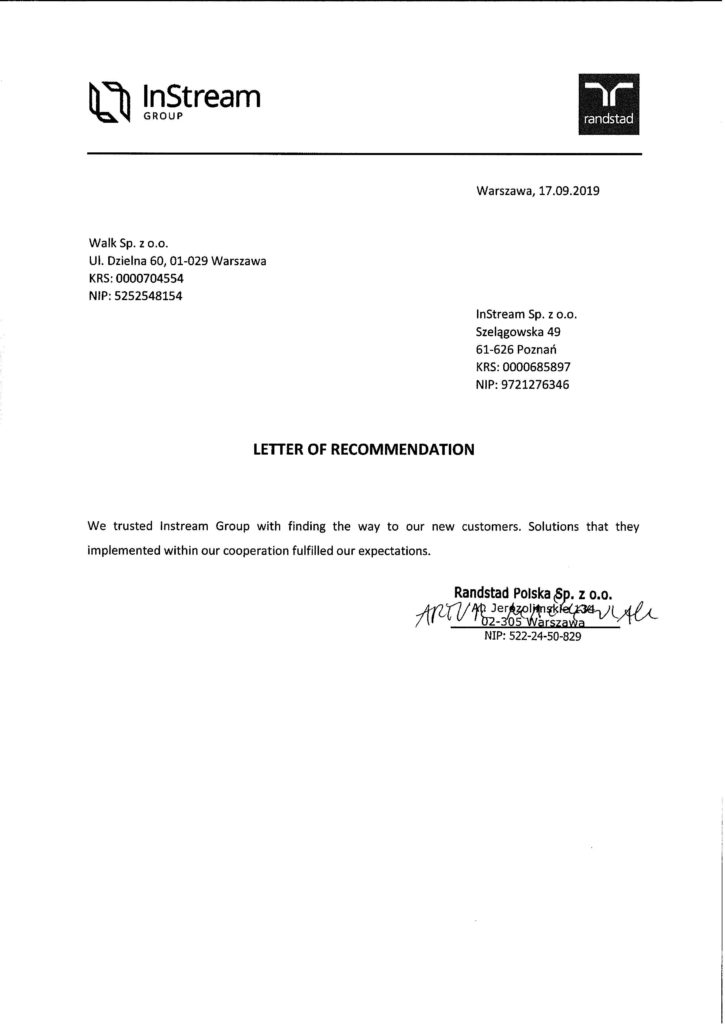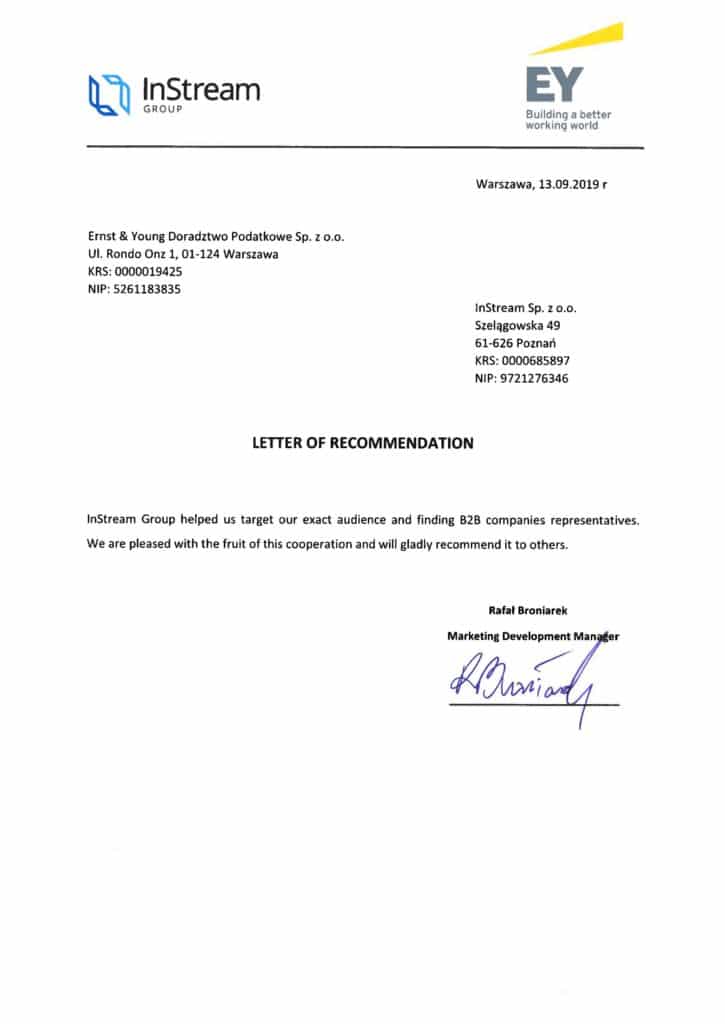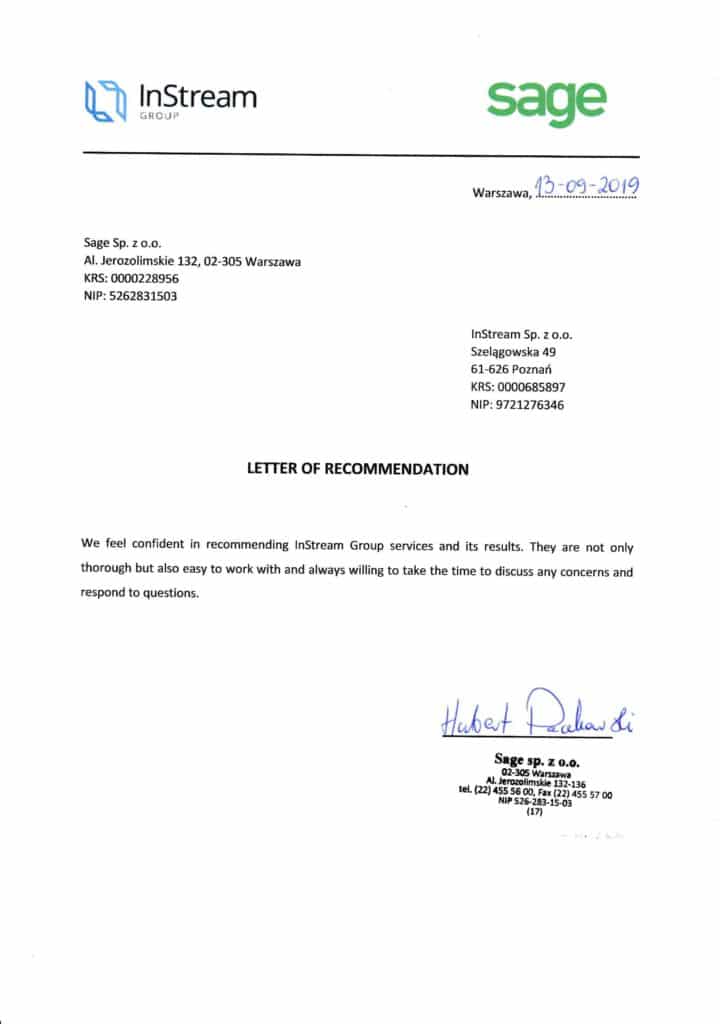How much sales content do you see every day? I see just enough to sense some kind of a remote manipulation. When I recognize a purely sales-oriented e-mail, just as most people do, I mark it as spam. So how to create a message that arouses interest and generates high response rates? The solution is cold emails. A good cold email will not be marked as spam. Why? Because professionally prepared people stand out from the crowd. I have some useful information for you to help create an effective cold mailing campaign.
1. What is a cold email?
It’s a personalised email sent to the group of people who best fit your target but have not yet made contact with your company. You send a cold email to specific people. Selection takes place by their names, positions, kinds of businesses they work in. These people move in an environment where specific processes take place, where concrete challenges and problems arise. If you take all this into account, you have a chance to achieve satisfactory results. A well-constructed message can achieve an open rate of 74.6% and response rate of 34.1%, of which 25.3% are positive. These are actual results of a campaign we conducted for one of our clients.

Positive answers open the way for you to present your offer. Cold email is not sales communication, but building relationships that can translate into sales. By sending a message to a person who has not yet contacted you, you break the ice and have a chance to establish a business relationship.
2. Cold email content structure

Don’t forget to keep in touch. It is very important to have a footer containing your full contact details: company name, website, email address, telephone number.
Structure is one thing, what about the content itself? Two essential features of cold mail you should know are:
- Make it look super important to your audience. Send emails that your recipients want to get, place yourself in their shoes and write them what they would like to hear. Your message should be about your recipients, not about you, and speak of possible benefits for them, not for you.
- Make it super short. In most cases you write to people who have very limited time. Try to communicate all the relevant information in a succinct and accessible way. Your recipient may be so distracted when they receive an email that they will not be able to focus on understanding the complex content.
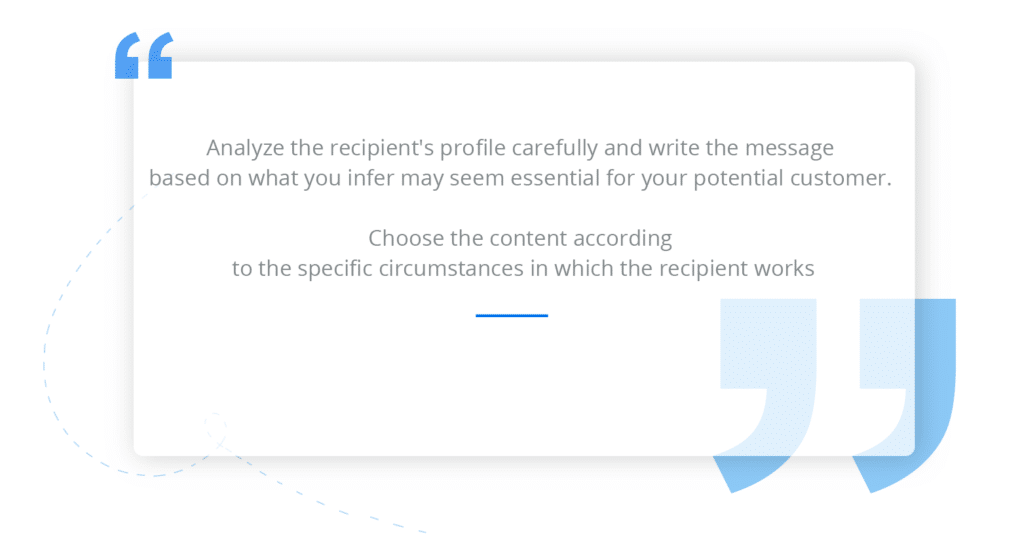
3. Profiling—who is the target of the campaign?
How do I profile my contacts? Databases are different, not all of them will contain your potential customers. A lot depends on the accuracy of the information. Let’s use a simple example. Imagine that you are providing software for a manufacturing sector that is designed to manage machine production. Very general databases, such as those containing all the production companies in a given region, will also include producers of beer or cosmetics, for which your software is useless.
Of course, the general database is going to be cheaper, but so what if all it translates to is an inadequately low ROI.
Empathy Mapping method helps to understand the customer towards whom you want to target the campaign
It is a simple technique used to profile potential customers. It helps us better understand what people think and feel, focus on their experiences and needs. It allows us to go beyond the traditional profiling of customers, which is usually based solely on the industry or location in space.
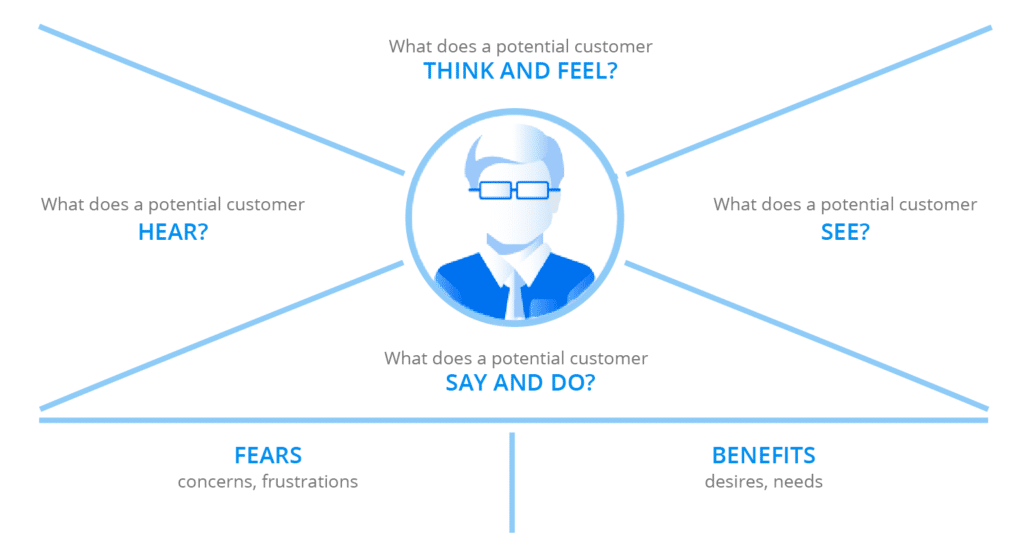
4. Making the message personal
Unfortunately, just inserting someone’s name or company name into the message has long since stopped working. Try harder. To convince your recipients that you are writing especially for them, you have to show them that you know what they are doing, that you have seen their profile/offer/page/article and that it was this that made you introduce yourself and your company to them. “Presentations”, not “advertisements”! Place yourself in your recipient’s shoes and try to write a message you’d like to get yourself. As you probably know, pushy salesmen end up in spam or trash.
Focus on the problems the recipient of the message has and how you can solve them. If you want to write about yourself, it has to translate into a specific value for the potential customer: build trust, expertise, or convey a sense of security.
Remember that nobody cares that you have “highest quality products, prepared by a team of experts with many years of experience”. Each of us has read such sentences at least hundreds of times in our lives.
Show the person you are writing to how you can change their life—or, at least, the way their company operates—for the better. It is very important to prepare and analyze the real problems of the recipient, why these issues and not others, what is bothering him every day, what could be a potential solution. This will prevent you from trying to sell your software designed for machine manufacturers to a little brewery founded and run by five beer enthusiasts. Of course, we admire the passion of such people, but as you can probably guess, their problems are different from the lack of new software to support crane production.
To enhance the customization effect, always send cold emails from your name box to the recipient’s name box. In every company there is a general email address, which in practice might as well be called spam or nobody.ever.reads.that@xyz. Avoid these kinds of email addresses like fire.
5. Adjust the language to your target audience
This point is closely related to, or actually in line with the previous one.
To begin with, it is worth learning the basic rule of writing any content: “Write as you speak, only more carefully.” Then translate this rule into a specific target group. That is, write in the same language that the target audience uses on a daily basis, but try to do it a bit more carefully.
In most cases, this requires thorough research. After all, not everyone who writes cold emails is at the same time the bank’s CEO, IT director and owner of a small but thriving start-up. You can take my word for it: each of these persons communicates in their mother tongue, but uses it in many different ways.
For example, the president of a company with an annual turnover of over 400 million PLN will expect a specific, professional language to quickly take him from A to B, while at the same time indicating what it is about. Such people have little or no time , which should be borne in mind when writing to them.
However, the same message will not necessarily work if you write to a 28-year-old, ambitious owner of a fast-growing company, who, although he works just as hard, has an open mind, is full of enthusiasm, and who had set up his own company with an idea of escaping the life thought to be traditionally imposed by the modern world (and obviously associated with working for large companies or corporations).
Such a person will expect a lighter (but still professional) language, as a rule they will be more open to conversation and more willing to spend some more time reading the news, especially if the content turns out to be really interesting.
These are tips and tricks for our readers, which illustrate certain ways of thinking. However, keep in mind that every product, every industry, every company and, last but not least, every person is different. That is why it is necessary to constantly search for solutions that work best.
6. Follow up—don’t let potential customers ignore you
Our experience shows that one cold email is definitely not enough. There is a serious risk that it will reach the recipient’s mailbox at the least appropriate time. It will be hastily opened and forgotten even faster.
Therefore, to avoid such a situation, build a cold mailing campaign consisting of a minimum of 3 and a maximum of 7 messages sent at intervals of several days.
It is important that individual messages do not replicate the same content, and you absolutely should not copy whole sentences. Successful follow-ups must have a varied design, be based on a variety of arguments and create one coherent and mutually compatible whole.
For example, if you describe the general activities of your company in the first message, the following should highlight one of its aspects which can be of interest to your target audience. It may be a good idea to present a concise case study that will refer to one of your previous services or products.
7. Cold mail types
Cold email can take many forms. Their common feature is the above mentioned structural elements. You can use them, like blocks, to build different messages. This simple method is likely to give satisfactory results.
BAB or before-after-bridge
B Indicate the problem that concerns the recipient in the first part of the email. Let him know that you know who he is, what he does, and what difficulties he may have with the company he works for.
A In the next part, describe the ideal situation in which the problem does not exist, because the given area of his business works as efficiently as possible.
B Finally, present your product—your proposed solution to the problem that leads to the ideal situation for the recipient—and suggest further conversation about it.
AIDA: attention-interest-desire-action
A Focus the recipient’s attention on information about him—his company and its kind of activity, his recent post, article—anything that concerns him.
I Mention your experience in working with people with a profile similar to that of the recipient.
D Present what the recipients can gain by contacting you—it works on a FOMO basis, make them afraid that some great benefit may slip their attention.
A Suggest what the recipient can do not to miss this chance
PAS: problem-agitate-solve
P Inform the recipient that you know his problems.
A Present your product.
S Tell them how this product will solve the problem and suggest contacting them regarding the matter.
PPP: price-picture-push
P Appreciate the recipient—show how impressed you are with his website, action, article, congratulate him on his success.
P Find a link between your product and the recipient’s business, tell him how it could be helpful.
P Suggest action—meeting, phone call, reading your article.
SSS: star-story-solution
S Show what a perfect thing you have to offer, who you are, what you do
S Explain how this perfect thing you have solved a problem similar to that of the recipient…
S …and how it can solve the specific problem your customer is facing
8. Why is cold email more effective than cold call?
I don’t know about you, but when I think I’m supposed to call strangers and try to sell them something, I get a twitch. Why? Because in most cases such conversations are not pleasant, you have the feeling that the other person doesn’t want to talk to you at all, is impatient, and it’s a hell of a challenge for you to get at least a fraction of what you have to say across to the recipient. Let’s assume that you can do it, your interlocutor is interested in the offer: what happens? He asks you to… send an email. Isn’t it easier to skip the frustrating stage and send an email right away?
Why do people prefer to receive proposals, invitations and offers by email? Because they can go back to the information, analyze it at a convenient moment, check your company to be clear who they are dealing with. This is not surprising given how much information we process every day. Additionally, with the development of mobile technology, email has become a private, personalized and discreet means of communication.
9. Example of a PPP-type cold email

Let’s discuss it.
- In the first part, show your appreciation towards the recipient: you may have managed to read somewhere about the company he works for, see the recipient’s new website, participate in the same event as the recipient, read his or her article. Anything that will be, at the same time, the recipient’s positive action and a link between him and you.
- Then say that you know what problems he has, what he might need. When writing the second part, focus on your customer profile analysis and his empathy map. Tell the recipient what you can do for him—how your product/service responds to the specific needs of the company he works for.
- Call to action—what the recipient should do. Of course, suggest a meeting to present your offer.
It is very likely that for the reasons mentioned above you will not receive an answer to this message. Send another one, then one more. Use phrases:
- “Did you manage to read my previous message?”
- “if you find a moment to make a phone call, I’m happy to find out what your needs are.”
- “As I said before, I think I can help…”
Give the recipient the opportunity to choose the reason for not writing you back. Create a list of possibilities: there is no such problem you write about, he has no time, he is not responsible for this particular area in his company.
If you need more information about cold mailing, or if you want us to help you to implement a perfect campaign based on this method, please contact us. As Growthlab.pl we effectively generate B2B leads using personalized cold emails.

